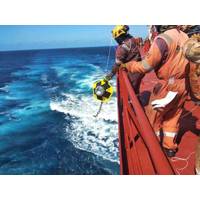
New Wave Data Underpins Ship Structural Integrity
your average wave height up or down,” Janssen says.Many forecasters use the same mathematical models – it is the data fed in to those models that determines how accurate the results will be. “Is the climate changing? Absolutely,” says Janssen. “Is it going to change our weather systems over the ocean? 100%. Do we know exactly what that is looking like? No, I don’t believe we do yet. This speaks to our urgent need to rapidly expand ocean data collection at scale.”IACS researchers have determined that while Version 2 does not include any climate forecasts, IPCC projection
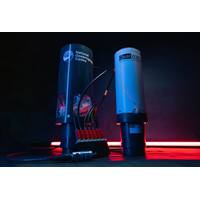
Tech File: BORAbox Helps Collect Ocean Data
– a measure of the water’s ability to resist a reduction in its pH level. The information gathered by the BORAbox will feed into a global understanding of climate change and its impact on the oceans. As a result, the research will also be used to better predict how the oceans and weather systems will react over the coming decades.Dr. Carla Sands, BORA project manager from the National Oceanography Centre, said, “This launch is an exciting moment for ocean research. So much of our ocean remains unexplored. This new technology allows us to dramatically increase our monitoring capabilitie

Morgan Confirmed as Deputy NOAA Administrator
to this position. He most recently served as a professor and associate department chair in the Department of Atmospheric and Oceanic Sciences at the University of Wisconsin-Madison, where his research was focused on the analysis, diagnosis, prediction, and predictability of mid-latitude and tropical weather systems
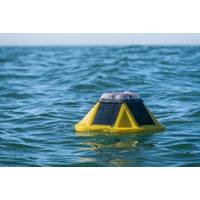
The Forecast for Weather-Spotting Technology
(2021-2030) should herald an increase in marine exploration, aiming to better understand our oceans to reverse the declining health of ecosystems. Heightened knowledge about these waters means a stronger, more effective commitment to even further exploration and to mitigating the impact of weather systems on coastal communities and marine ecosystems.Weather spotting and its related technologies are not a new industry, nor do they lack in notable achievements. Since the late 1800s, various strategies, including at-sea observations, buoys, satellites, and statistical and modeling predictions have
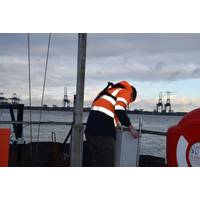
OceanWise, Valeport Supply Monitoring System for HHA
Harwich Haven Authority (HHA) has chosen OceanWise to supply, install and maintain new tide and weather systems at the 900-year old east coast of England port. British marine instrument specialist, Valeport, has partnered with OceanWise to deliver the environmental monitoring systems and continue its long-standing relationship with HHA.HHA, a trust port, is responsible for 150 square miles of the Haven and attracts trade from all over the world seeing 40% of the UK’s container traffic travel through its area.The bespoke system for HHA uses the latest technology to measure tide, weather and wave
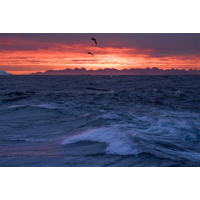
Waters West of Europe Drive Ocean Overturning
Knorr (now retired) and Neil Armstrong.“The weather at these latitudes in the North Atlantic can be nasty, even in summer, demanding highly-skilled ships’ crews, technicians, engineers and scientists working hard, night and day, as one team,” said Bower.“Oftentimes the harsh weather systems required us to play cat and mouse with strong winds, high seas, and large numbers of icebergs—all with a ship filled to the brim with gear,” added Pickart.Scientists from 16 research institutions from seven countries collaborated on the new study, the first published paper from the
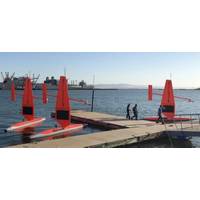
NOAA to Deploy Saildrones for Climate Study
and count fish, seals and whales. For the first time, the vehicles will journey through the Bering Strait into the Arctic with a newly adapted system to measure CO2 concentrations. “We want to understand how changes in the Arctic may affect large-scale climate and weather systems as well as ecosystems that support valuable fish stocks," said Jessica Cross, an oceanographer at NOAA Research’s Pacific Marine Environmental Laboratory, who is using the unmanned system to study how the Arctic Ocean is absorbing carbon dioxide. A third unmanned Saildrone
Renewable Energy: Wind, Sun Could Dominate by 2030
of Colorado Boulder. Since the sun is shining or winds are blowing somewhere across the United States all of the time, MacDonald theorized that the key to resolving the dilemma of intermittent renewable generation might be to scale up the renewable energy generation system to match the scale of weather systems. So MacDonald, who has studied weather and worked to improve forecasts for more than 40 years, assembled a team of four other NOAA scientists to explore the idea. Using NOAA’s high-resolution meteorological data, they built a model to evaluate the cost of integrating different sources
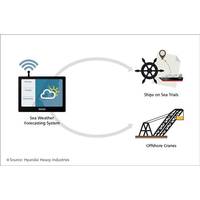
HHI’s New Weather System Helps Plan Sea Trials
system can also display sea weather information on the specific spots on an electronic navigational chart. “The weather forecasting system we developed is linked to 530 weather observation equipment across the nation and it can forecast 10 percent more precisely than other existing weather systems by analyzing adjacent sea topography 16 times more accurately,” according to an HHI official. Since 2006, HHI has been operating Weather Management by installing weather observation equipment at 18 spots at its Ulsan yard to monitor the weather on a 24-hour basis, and reporting


 February 2025
February 2025





